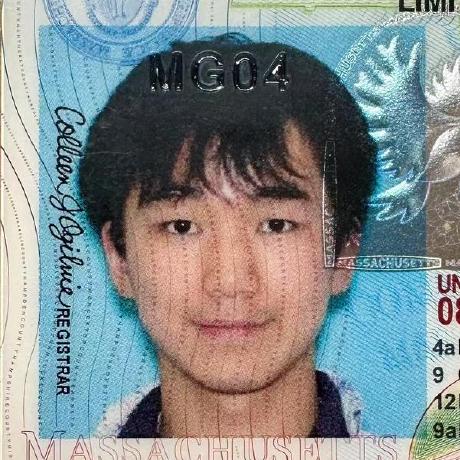Nonlinear Components
Published:
Time for the inner loop of the SPICE algorithm: nonlinear components!
We use the infamous Newton-Raphson method to take successive linear approximations until a solution is reached
This part of the report is pretty well-written, so I’ll just quote it.
Newton’s Method
Diodes has a nonlinear current-voltage relation:
\[i_d = I_s (e^{v_d/V_t} - 1)\]where \(I_s\), \(V_t\) are constants.
\input{circuits/diode-demo}
At step \(0\), let \(G_{eq}\) be derivative \(\frac{di_d}{dv_d}\), where \(i_d = i_{d0}\), \(v_d = v_{d0}\): \(G_{eq} \equiv \frac{di_d}{dv_d} = \frac{I_s}{V_t}\, e^{v_{d0}/V_t}\)
We apply the Newton–Raphson algorithm to build a linear estimate model around an initial guess.
\[\begin{align*} i_{d} &\approx i_{d0} + G_{eq} (v_d - v_{d0})\\ &= (i_{d0} -G_{eq}v_{d0}) + G_{eq}v_d \end{align*}\]Fortunately, any linear relation can be modelled by circuit elements. The constant term can be represented by a current source \(I_{eq} = (i_{d0} -G_{eq}v_{d0})\), and the linear term can be represented by a resistor \(G_{eq} = \frac{1}{R_{eq}}\). We add them to the matrix. This process is called stamping.
\[\usepackage[american]{circuitikz} \usepackage{tikz} \begin{circuitikz}[american] % Coordinates for nodes and ground \coordinate (v1) at (0,2); \coordinate (v2) at (5,2); \coordinate (vn1) at (2, 2); \coordinate (vn2) at (2, 0); \coordinate (vn) at (5, 0); \coordinate (gnd) at (0,0); \draw (vn1) to[R, l_=$R$, *-*] (vn2); \draw (vn1) -- (v2); % Resistor R3 between v2 and ground \draw (v2) to[D, l_=$D$, *-*] (vn); % Current source I1 between v1 and ground \draw (gnd) to[I, l_=$I_1$] (v1); \draw (v1) -- (vn1); \draw (vn2) -- (vn); \draw (vn2) -- (gnd); % Label for v1 and v2 nodes \node at (vn1) [above] {$v_1$}; %\node at (v2) [above] {$v_2$}; \node at (vn2) [below] {GND}; \end{circuitikz}\]We can solve this linear circuit and get the node voltages.
From the node voltages, we update our initial guess.
The above procedure of stamp-solve-update is repeated until the solution converges, which is detected when the deviation of the solution \(\mathbf{v}\) is below a threshold.
Registration
Same format, but the following are new:
struct DiodeIs,Vtare constants from the diode equationv_previs the memory element from the last approximation
type:NL_T: for CircuitCim to recognize nonlinear components and optimizeupdate(): pointer to the updater function. Will be mentioned below- Initial voltage guess: This is tricky
- You obviously don’t want a value too large (like 5 V).
Vtis small number. This will blow up the floating point - You also don’t want it to be small (smaller than voltage drop, like 0.5 V). This approximation will have a very shallow slope, leading to a very high V for the next step, and falling back to the previous case
- A moderate value, like 1 V is good. You will get some large initial currents, but they will converge.
- You obviously don’t want a value too large (like 5 V).
typedef struct {
int n1, n2;
float Is, Vt;
float v_prev;
} Diode;
void add_diode(int n1, int n2, float Is, float Vt) {
Component *c = &comps[ncomps++];
c->type = NL_T;
c->stamp = dio_stamp_nl;
c->update = dio_update;
c->u.dio = (Diode){n1,n2,Is,Vt,1.0f}; // initial guess: 1V
}
Stamping
stamp() uses the initial guess/prev values to make a linear approximation of the diode model: a conductor(resistor) and a current source in parallel.
void dio_stamp_nl(Component *c, float Gm[][MAT_SIZE], float I[]) {
Diode *d = &c->u.dio;
// 1. read last stage's voltage
float Vd = d->v_prev;
// 2. compute new iteration parameters
float ExpV = expf(Vd / d->Vt);
float Geq = (d->Is / d->Vt) * ExpV; // Geq = Is/Vt * exp(Vd/Vt)
float Ieq = d->Is * (ExpV - 1.0f) - Geq * Vd; // Ieq = Id - Geq*Vd
// 3. stamp G and I
int n1 = d->n1, n2 = d->n2;
if (n1 != -1) Gm[n1][n1] += (Geq);
if (n2 != -1) Gm[n2][n2] += (Geq);
if (n1 != -1 && n2 != -1) {
Gm[n1][n2] -= (Geq);
Gm[n2][n1] -= (Geq);
}
if (n1 != -1) I[n1] -= (Ieq);
if (n2 != -1) I[n2] += (Ieq);
}
Updating
This is done after solving the matrix
void dio_update(Component *c) {
Diode *d = &c->u.dio;
d->v_prev = (d->n1!=-1? v[d->n1]:0) - (d->n2!=-1? v[d->n2]:0);
}
Solving an operating point
Now we will use this to solve an operating point (one point in time)
/* clear everything EXCEPT static components */
void clear_system_sta(void) {
memcpy(G_lin, G_sta, sizeof G_sta);
memcpy(G, G_sta, sizeof G_sta);
memcpy(I_lin, I_sta, sizeof I_sta);
memcpy(Ivec, I_sta, sizeof I_sta);
}
/* stamp all static components */
void stamp_static(void) {
for (int i = 0; i < ncomps; i++) {
if (comps[i].type == STA_T && comps[i].stamp_lin) {
comps[i].stamp_lin(&comps[i], G_sta, I_sta);
}
}
}
void operating_point() {
(void)t;
int ret = 0;
// Newton-Raphson loop for all nonlinear components
for (int iter = 0; iter < MAX_NR_ITER; iter++) {
// 1 restore the static linear stamps
clear_system_sta();
// 2 stamp all nonlinear components
for (int i = 0; i < ncomps; i++) {
if (comps[i].type == NL_T && comps[i].stamp)
comps[i].stamp_nl(&comps[i], G, Ivec);
}
// 3 solve the system
solve_system(nnodes);
// 4 compute dv, check for convergence
float maxdv = 0.0f;
for (int n = 0; n < nnodes; n++) {
float dv = fabsf(v[n] - prev_v[n]);
if (dv > maxdv) maxdv = dv;
}
if (maxdv < NR_TOL) { // converged!
break;
}
// 5 Update every device's internal operating point
for (int i = 0; i < ncomps; i++) {
if (comps[i].type == NL_T && comps[i].update) {
comps[i].update(&comps[i]); // update diode only
}
}
// 6 prepare for next iteration
memcpy(prev_v, v, sizeof prev_v);
}
}
